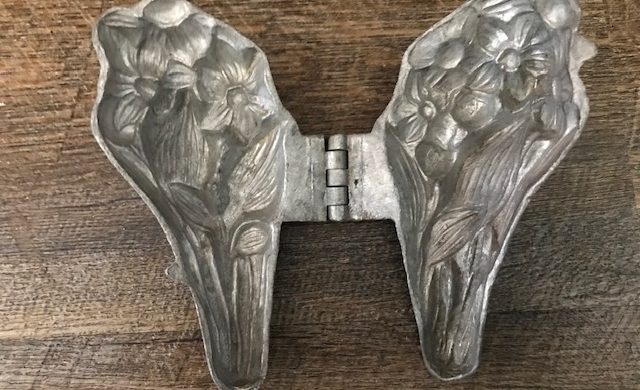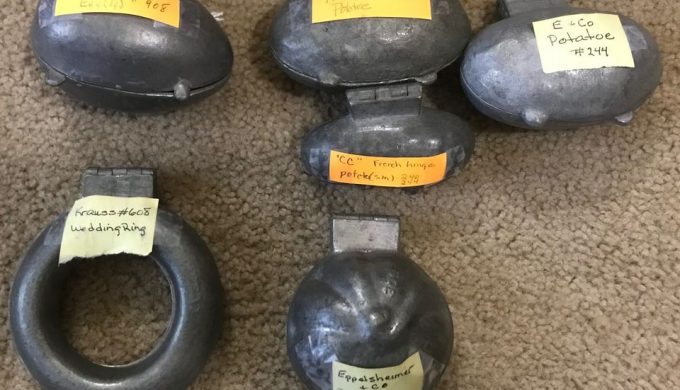If you have encountered an odd pewter contraption shaped like asparagus or a basket of strawberries in an antique store, you may have stumbled upon an ice cream mold or form. These devices enjoyed a moment in history when the art of dining and entertaining had a new invention: the hand-cranked ice cream freezer. After making their own ice cream at home, some would fill their collection of ice cream molds, thus shaping the ice cream into various shapes. Professionals utilizing this tool were known to additionally decorate molded ice cream by painting it with food coloring.
 Photo by Honky Tonk Foodie
Photo by Honky Tonk Foodie
History
Historical Ice Cream Molds Now Unique Collector’s Items

Photo by Honky Tonk Foodie
A French company named Cadot began producing ice cream molds in 1832. The concept caught on in America in the 1870s. In 1897, U.S. citizen Alfred Cralle was issued a patent on an ice cream mold. The wide range in which the molds were created is a reflection of the times and access to various popular foods. Ice cream molds can be found in shapes like animals, symbols, fruit, flowers, holiday themes, human figures, and more. George Washington was once a popular subject.

Photo by Honky Tonk Foodie
Two American companies making pewter ice cream molds were Eppelsheimer Mold Manufacturing Co. (E & Co, NY), V. Clad & Sons, and Schall & Co. (S & Co.), which later became Krauss. The era of ice cream molding faded by the 1950s due to technological advancements in ice cream manufacturing and its widespread presence in grocery stores, which transformed ice cream in the eye of the American public from a rare dish to an everyday treat. Today, the market for these unique antique items, as well as the manufacturers’ catalogs, fluctuates as interest ebbs and flows. Use of pewter ice cream molds or forms is discouraged, however, as some contain traces of lead. Do you know anyone with a collection of ice cream molds? Have you ever eaten molded ice cream?


